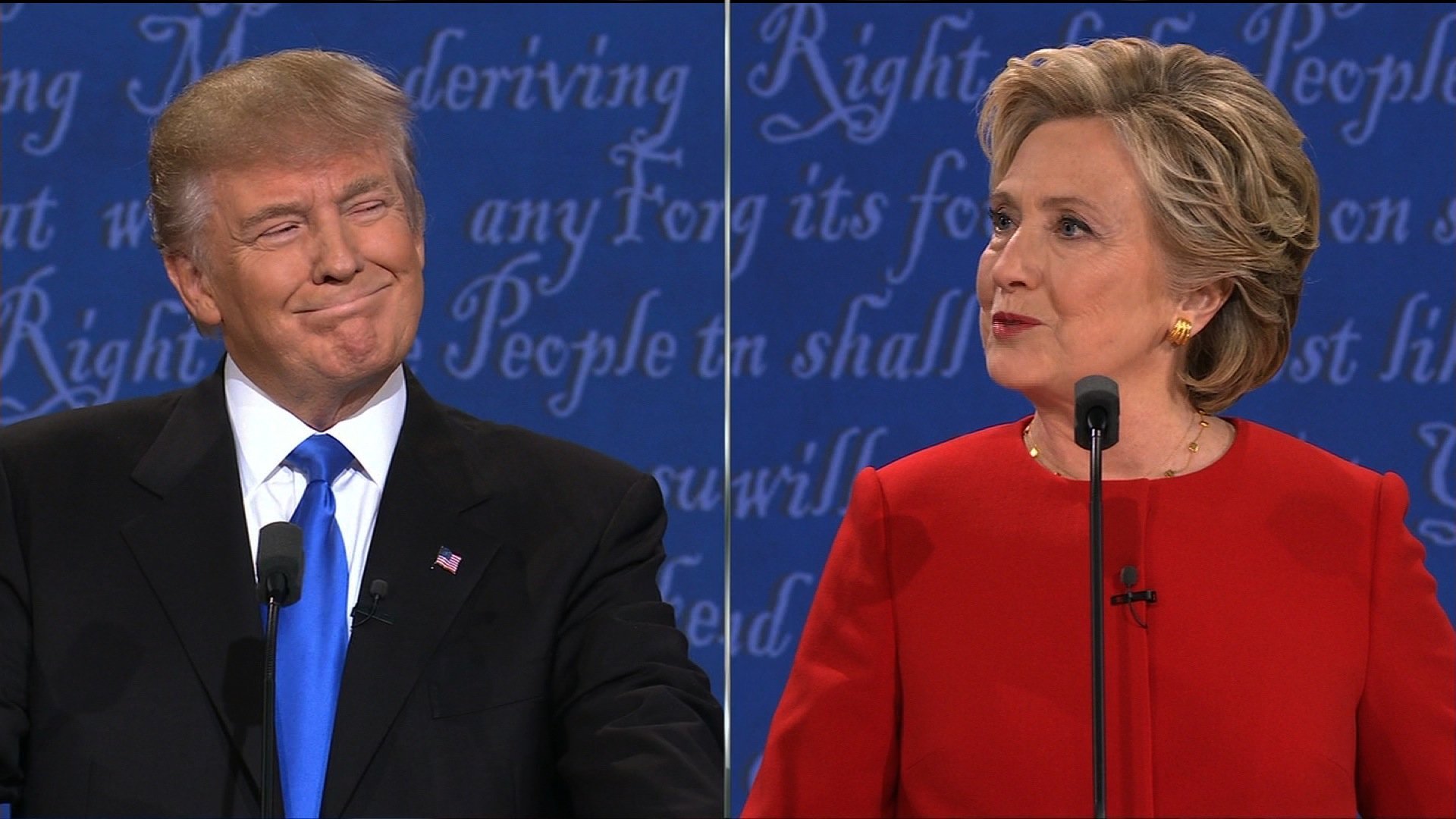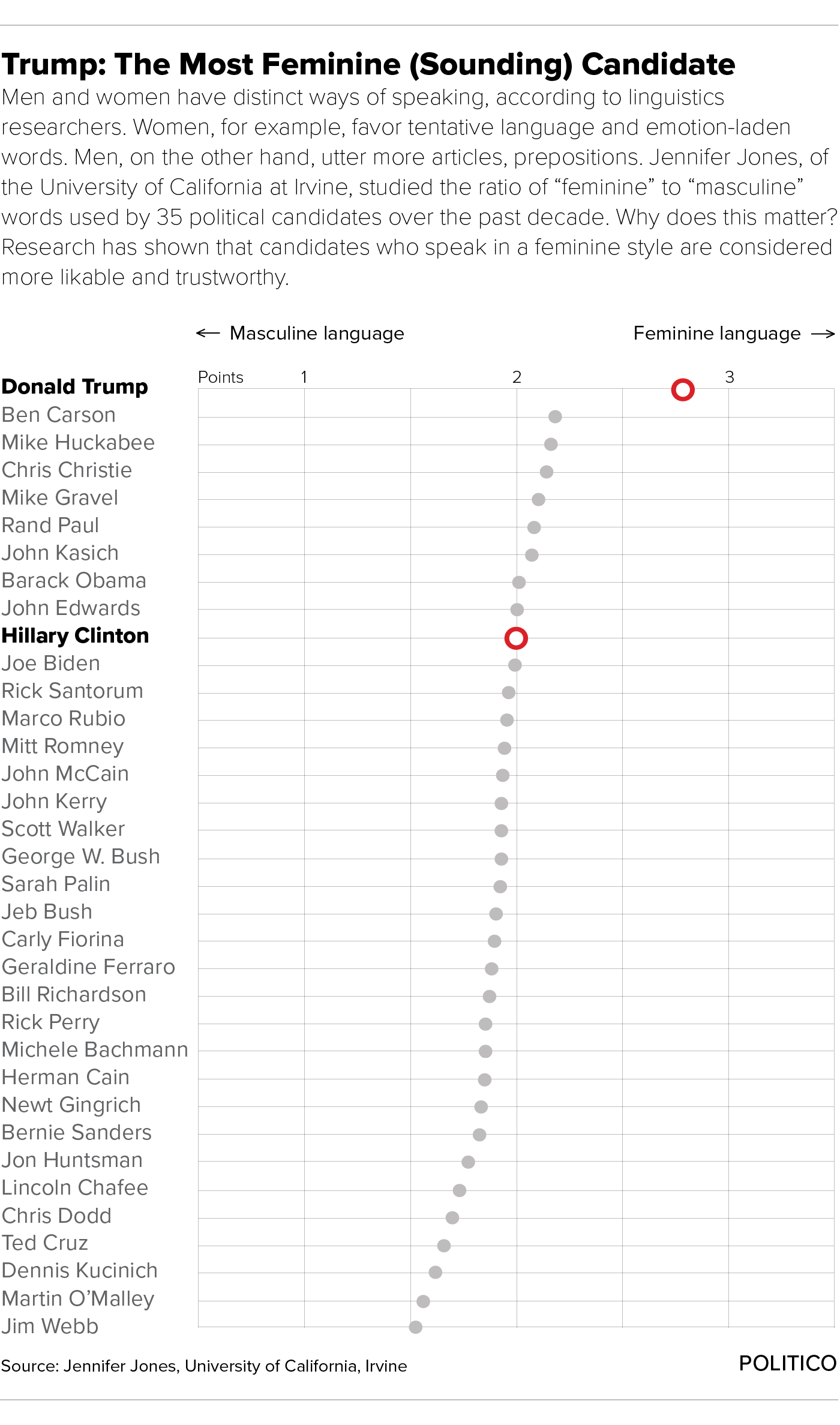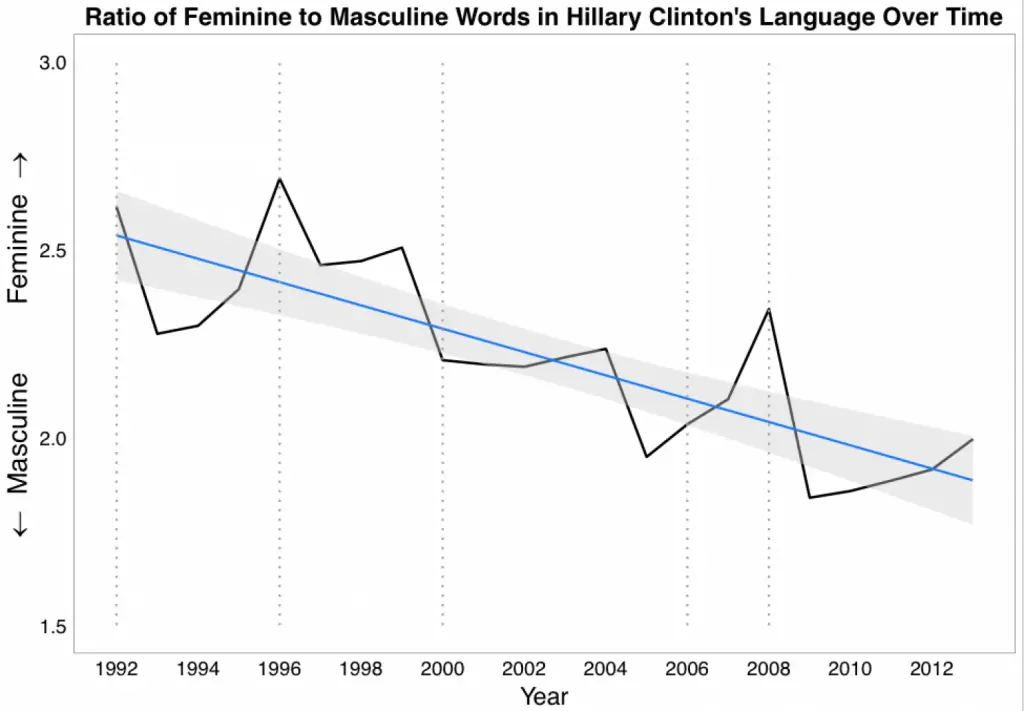Bob Dylan recently won the Nobel Prize for Literature. Seems appropriate, because one of his best songs is “Just Like a Woman,” and that’s how Donald Trump speaks. What? What’s that, you say? How can the macho Trump, who belittles opponents and brags about his sexual prowess, be anything like a woman? Well, that’s what language experts are saying.
In the 2016 presidential contest, there has been one thing that supporters and detractors of Donald Trump have agreed on. The chest-pounding real estate mogul from New York has emerged as the quintessentially masculine candidate. Love him or loathe him, Trump’s campaign has been defined by the ways he has asserted his maleness—mocking his opponents for their low energy, bullying his critics, sneering at perceived weakness, boasting of his sexual prowess, vowing to hit back twice as hard as he’s been hit.
But academic research has picked up something that thousands of hours of campaign punditry has missed completely: Donald Trump talks like a woman. . . More than just a comical curiosity, this fact about Trump’s mode of communication might help explain how a candidate who has been so extensively rebuked for his mean-spirited attacks on immigrants, women, the disabled and even prisoners of war has managed to attract support from millions of voters who adore the way he says openly what they feel. . .
It’s not just a lazy stereotype that men and women speak differently. In fact, researchers who have sifted through thousands of language samples from men and women have identified clear statistical differences. Some of these differences are exactly what you’d expect—men are more likely to swear and use words that signal aggression, while women are more likely to use tentative language (words like maybe, seems or perhaps) and emotion-laden words (beautiful, despise). But other patterns are far from obvious. For example, contrary to the common stereotype that men can’t resist talking about themselves, women are heavier users than men of the pronoun “I” whereas the reverse is true for the pronoun “we”; women produce more common verbs (are, start, went) and auxiliary verbs (am, don’t, will), while men utter more articles (a, the) and prepositions (to, with, above); women use fewer long words than men when speaking or writing across a broad range of contexts. . .
His linguistic style is startlingly feminine, so much so that the chasm between Trump and the next most feminine speaker, Ben Carson, is about as great as the difference between Carson and the least feminine candidate, Jim Webb. And Trump earns his ranking not just because he talks a lot about himself or avoids big words (both of which are true); according to Jones, he also shows feminine patterns on the more subtle measures, such as his use of prepositions and articles.
Again, we’re talking about the manner of speech—the words used—not the meaning of those words.
Here’s a chart that shows how various candidates and politicians stack up. It’s no surprise that the tough Jim Webb’s speech is the most masculine of all, but Martin O’Malley?? He was little more than a passive cardboard-cutout at the Democratic debates this year, smiling, but having almost no impact.
Likewise, Lincoln Chafee rates as a very masculine speaker. Really? It’s not surprising that Hillary Clinton is number ten on the list. She has been criticized as being “too masculine” by detractors. Studies say she has become more “masculine” as she has gone along.
My research finds that as the Democratic nominee moved from first lady to U.S. senator to secretary of state, she spoke in an increasingly masculine way. In talking more “like a man,” Clinton has conformed to prominent gender norms in American politics.
Women rarely act “like women” to achieve power and influence in politics. Women aspiring toward political leadership are more often expected to adopt masculine styles of behavior in order to get their points across. A classic example is Margaret Thatcher, who was trained to lower her naturally high-pitched voice to communicate with more authority. . .
In general, women tend to use pronouns (you, theirs), and especially first-person singular pronouns (I, me), more frequently than men. They also use common verbs and auxiliary verbs (is, has, be, go), social (friend, talk), emotional (relieved, safe, kind), cognitive (think, because), and tentative (guess, maybe) words at higher rates than men.
Men, on the other hand, tend to use first-person plural words (the royal “we”), articles (a, an, the), prepositions (of, to, under), big words (over six letters), words associated with anger (destroy, kill), and swear words ([redacted]) more frequently than women. . .
In the graph below, I calculated a ratio of feminine to masculine words in each transcript and, weighted by the number of words per transcript, averaged these values by year. The blue line represents the general trend and the dotted lines represent election years in which Clinton actively campaigned for herself (2000, 2006, 2008) or Bill Clinton (1992, 1996). Higher values indicate more feminine speech; lower values indicate more masculine speech.
Here are a couple video clips of both candidates sounding “masculine.”
https://www.youtube.com/watch?v=f3Eu6Rhm3cY
https://www.youtube.com/watch?v=540L1I1cWJg
And, of course, Rudy Guiliani must have heard that being more feminine could get more votes. . .
https://www.youtube.com/watch?v=4IrE6FMpai8
Donate Now to Support Election Central
- Help defend independent journalism
- Directly support this website and our efforts


